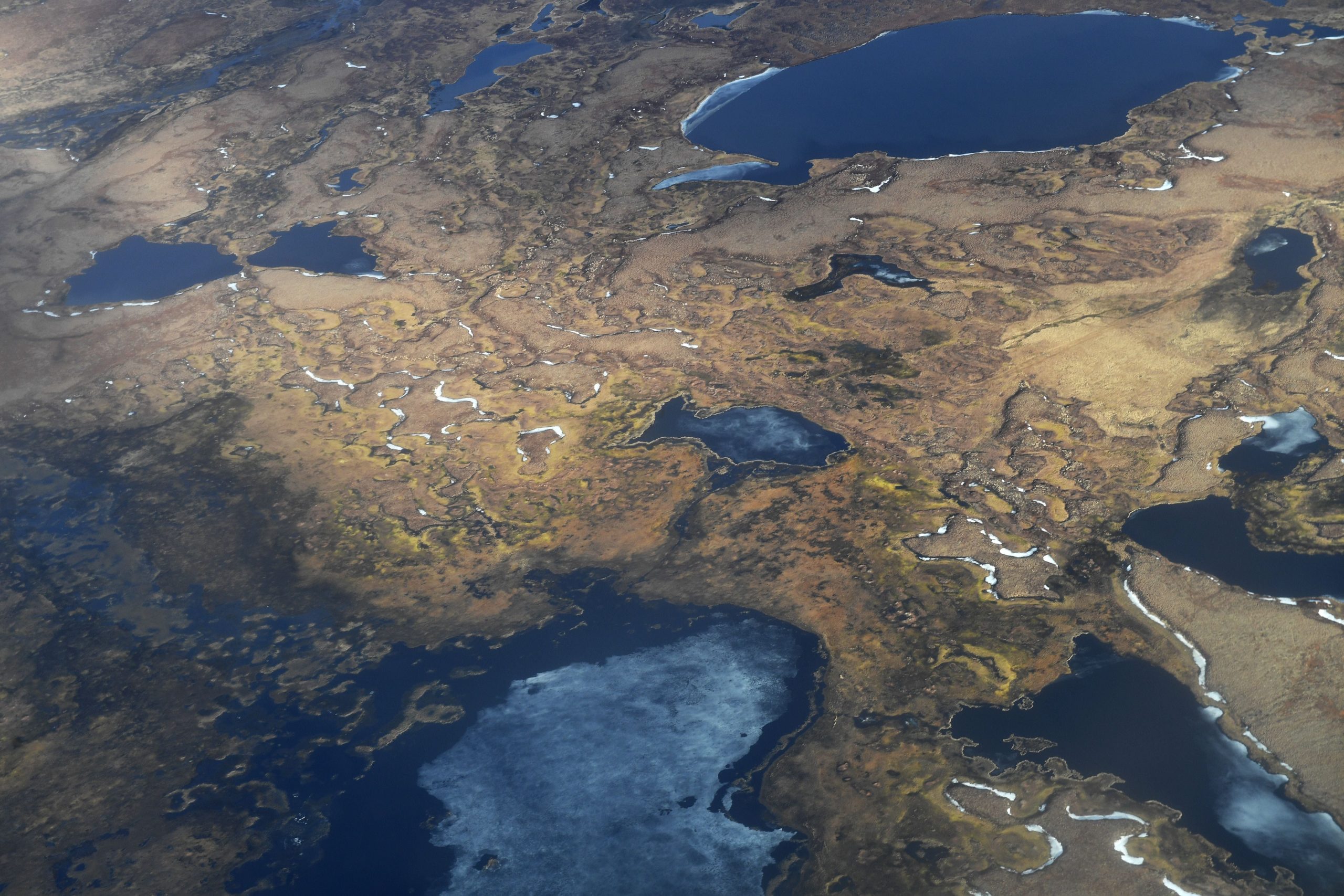Across the northern reaches of our planet, things are so cold that nearly 23 million square kilometres of earth remain frozen solid year-round. But that’s changing as the climate warms, and as that permafrost thaws, it releases trapped greenhouse gases from the soil. Scientists warn that radioactive waste and dangerous bacteria and viruses could emerge, too, potentially harming both wildlife and humans.
These are the latest threats in a rapidly melting land, from which images of sinkholes caused by exploding methane have become routine. A team of scientists recently attempted to measure the variety of dangers posed by the thawing permafrost, besides the obvious warming of the climate. Their results were published last month in Nature Climate Change.
“It’s important to understand the secondary and tertiary impacts of these large-scale Earth changes such as permafrost thaw,” said Kimberley Miner, a climate scientist at NASA’s Jet Propulsion Laboratory and the lead author of the paper, in an ESA press release. “While some of the hazards associated with the thaw of up to a million years of material have been captured, we are a long way from being able to model and predict exactly when and where they will happen. This research is critical.”
There’s good reason to be wary of pathogens coming up from the ice. Over the summer, a team of scientists reported the discovery of 28 novel viruses in a glacier in Tibet. Besides their hardy profiles, these viruses and bacteria tend to be remote enough from humankind that our bodies may not be able to recognise them as threats. In March, researchers reported finding deep-sea bacteria that were unrecognizable to mammalian cells. The Arctic is warming near three times as fast as the rest of the planet, which has researchers racing to understand the rapid rate of change.

“We have a very small understanding of what kind of extremophiles — microbes that live in lots of different conditions for a long time — have the potential to re-emerge,” Miner said. “These are microbes that have coevolved with things like giant sloths or mammoths, and we have no idea what they could do when released into our ecosystems.”
The premise is that once such microbes thaw, they’ll mix with meltwater and disperse throughout the environment, potentially creating new strains of antibiotic-resistant organisms. So far, 100 microorganisms in the deep permafrost in Siberia have already been found to be antibiotic-resistant, according to the ESA. And besides the hitherto-locked-away methane, carbon dioxide, bacteria, and viruses, there’s the concern of waste material from mining and chemicals that have been frozen underground but now will seep into the surrounding environment.
That doesn’t even get into what the thawing ground could do — and in some cases, already is doing — to infrastructure. Last summer, thawing permafrost contributed to a massive diesel spill in the Russian Arctic. Research published in 2018 shows disintegrating ground could affect 4 million people in the Arctic as well as a third of all infrastructure in the region.
Diego Fernàndez, a climate and earth scientist at the ESA, said in the same release that “NASA and ESA are joining forces to foster scientific collaboration across the Atlantic to ensure we develop solid science and knowledge so that decision-makers are armed with the correct information to help address these issues.”
This warning is a prudent reminder that the human-driven warming of our planet is an unprecedented experiment, and we can’t predict all of its ramifications. New diseases may be the least of our worries if unchecked greenhouse gas emissions continue.
